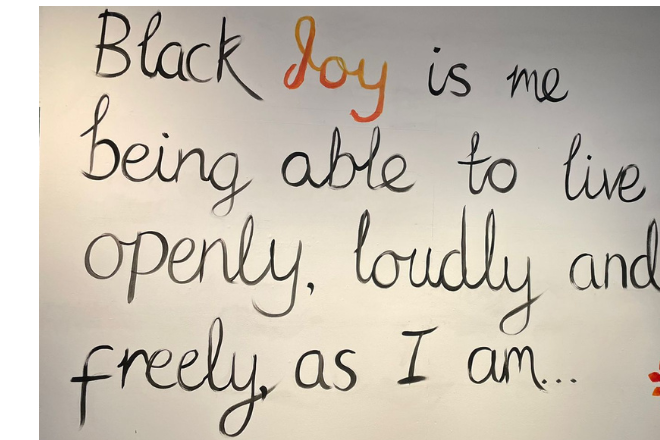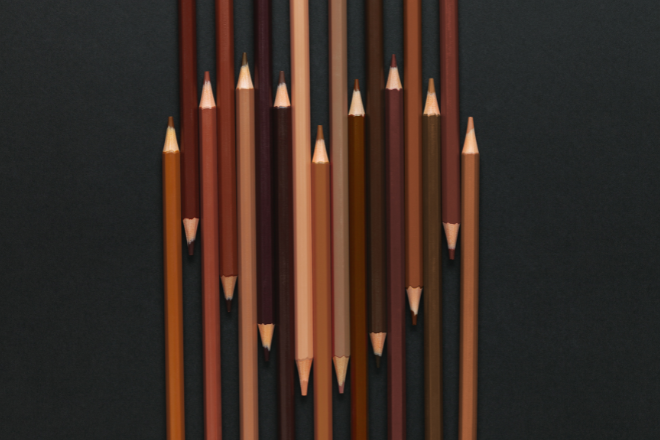
Hi I’m Charlotte Webber, an autistic researcher at the University of Edinburgh, who was involved with
Co-Production Collective when I was doing my PhD about young people's experiences with reading for pleasure. I am currently involved in a number of projects related to neurodivergent representation in Young Adult fiction, neurodivergent peer support, and promoting reading for pleasure. In this blog, I’ll share with you what I see as the difference between co-design and co-production from my experience of being involved in the Neurodivergent Peer Support Toolkit (NEST) project.
Project background
The Neurodivergent Peer Support Toolkit (NEST) project began after interviews with autistic school leavers, who said that they had felt better understood by other neurodivergent students than by neurotypical peers when they were at school. (You can read more about this initial research on this webpage.) The leavers said that school-based peer support – where neurodivergent students provide support for one another – could help reduce feelings of isolation, increase self-confidence, and build a sense of community for neurodivergent students. As peer support for neurodivergent pupils in school is still a relatively unexplored area, we wanted to work with neurodivergent young people to co-design a resource for setting up peer support groups in mainstream secondary schools.
How were neurodivergent people involved?
Seven neurodivergent young people (13-15-years old) who had experienced the Scottish secondary school system joined a young person co-design team, and a neurodiverse group of nine adults (teachers, researchers, educational psychologists, speech and language therapists, parents to neurodivergent children) joined an adult co-design team. Each group was invited to six meetings of 1.5–2 hours each to discuss the creation of peer support groups for neurodivergent students. They also commented on meeting agendas and minutes and could upload files to a shared Google Drive. Throughout this period, they worked together to pick out the main features they wanted from a peer support programme. ( You can read more about the feasibility study of the neurodivergent peer support toolkit in this report). These Included:
- That the group facilitator should listen to the feelings of neurodivergent students, be enthusiastic about setting up the group, advocate for and empower them, and be supported by wider school structures.
- That inclusiveness is essential, meaning students shouldn’t need a formal diagnosis to be able to join and that neurotypical students should be invited to come along, when appropriate.
- That peer support groups should directly address negative and outdated attitudes towards neurodivergence from other people and be mindful of unintended negative consequences (e.g., gossiping).
- That peer support groups should be student-led to make sure they are flexible to the different needs of different settings. This means that, in practice, each individual NEST group is co-designed by its members.
How did we design and test the NEST resources?
After the co-design stage, the core themes were used to develop the NEST handbook and supporting materials – a suite of materials for schools to set up neurodivergent peer-support groups. The co-design groups reviewed the draft handbook and provided feedback which was incorporated by the university-based research team. Four secondary schools in Scotland then took part in a pilot study where they used the handbook to set up a neurodivergent peer support group themselves. In interviews and focus groups afterwards, staff facilitators told us about the usability of the handbook, and neurodivergent students reflected on the things they liked (and didn’t like) about the groups. (You can read the academic paper about this stage of the project for further details.) Their feedback was incorporated into the final version of the handbook by the university-based research team.

Why are we saying the NEST project was co-designed and not co-produced?
While neurodivergent people have been involved in all stages of the project, the final resources were not fully co-produced. The co-design teams developed the key principles and reviewed the draft version of the handbook, and feedback from neurodivergent students and staff facilitators helped to refine it, but the handbook and supporting resources were finalised by the university-based research team (with ad hoc consultation with a teacher to check suitability for school contexts).
One reason for this was that in the final stages of the project, a change of personnel in the university-based research team meant there was a lengthy gap between the end of the co-design/pilot phase and the finalisation of the resources, and there was limited time before the end of the funding period to seek extensive additional feedback from the co-design teams. Additionally, they had already given a lot to the project, and we were concerned about overburdening them at a busy time of year (especially as there had been a gap since their last involvement). As the new project co-ordinator, it was difficult for me to (re)establish a relationship with the co-design teams, as I hadn’t been involved in the early stages where the groups had developed internal systems of respect and trust. In my previous role, I had worked with young people to design research into their reading experiences and worked with the co-design team right from the start (see my previous blog for Co-Production Collective). This enabled me to see the value in taking time to develop a meaningful relationship with the team before starting to plan any research. Joining the NEST project in its later stages really emphasised how important this phase is!
Additionally, while the idea for the resources came about following interviews with neurodivergent people, and neurodivergent people were involved throughout, the project was ultimately situated within the university; it was the university-based research team who applied for funding, convened the co-design groups, and finalised the resources. We are upfront about this, outlining the co-design teams’ contributions in the handbook but we don’t claim that they are co-authors.
While the project was not co-produced, we hope that adopting a co-design approach means that the needs and priorities of neurodivergent people are better reflected than they would have been if we hadn’t worked with them at all (or if we’d simply consulted them). We also hope that the handbook and resources will be useful for schools looking to help neurodivergent young people spend time with like-minded others, have fun, and feel comfortable to be their authentic selves.
How can you find out more about NEST?
You can join us for the online launch on Thursday 13th June, 4 - 5:30 pm (online). Register for free via Eventbrite or visit our webpage to find out more about NEST ahead of the launch. The resources will be freely available to download and use in mainstream secondary schools, following the online launch on Thursday 13th June.
Further reading
A note from Co-Production Collective
This blog demonstrates that in some circumstances it is not always possible or even appropriate to fully co-produce a project from beginning to end. It is important that you are transparent about limitations, and you enable people to shape as much of the project as possible in partnership with you, even this kind of involvement can make a real difference.
At Co-Production Collective we don’t see co-production as being ‘the gold standard’ that must always be adhered to, but as a values-based way of working together in equal partnership for equal benefit that suits some circumstances and not others.
Handbook illustration by © Minerva Fletcher-Watson,a member of the neurodivergent young person co-design team).
Photo credit Anton Sukhinov from Unsplash.





.png)

.png)
.png)


.png)
.png)
.png)